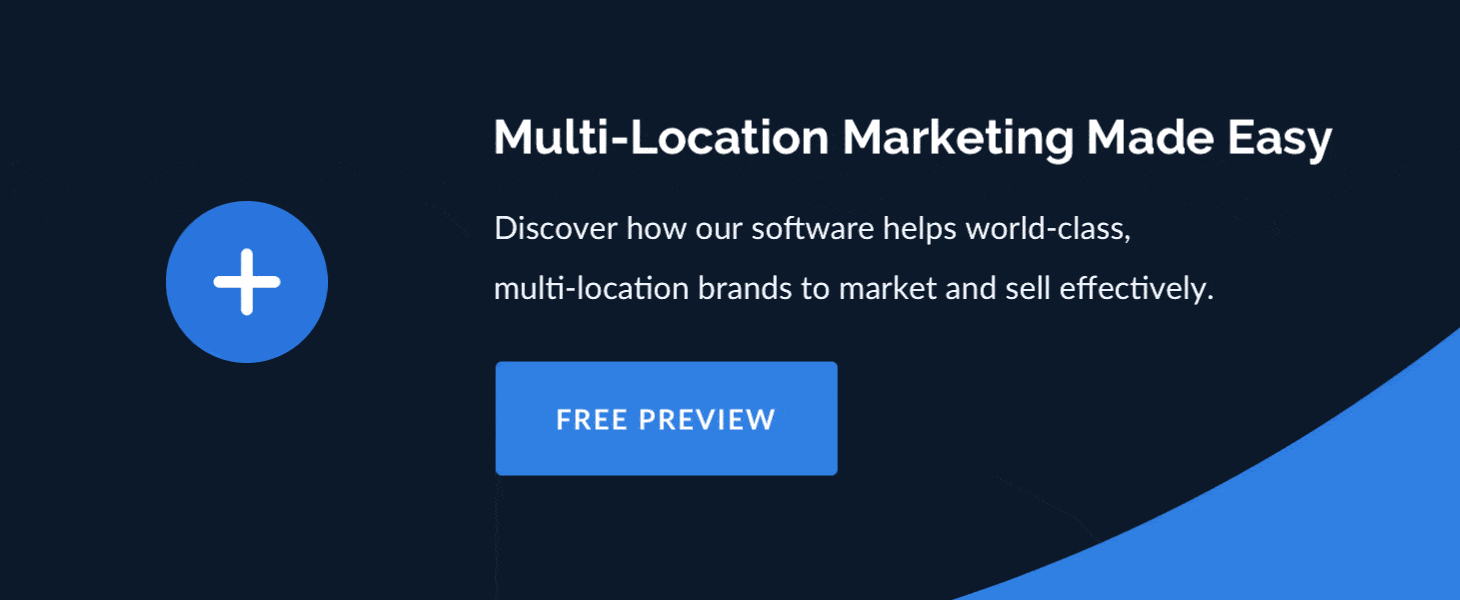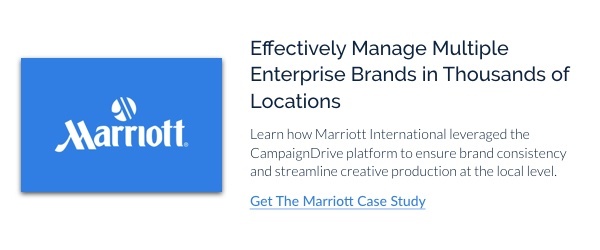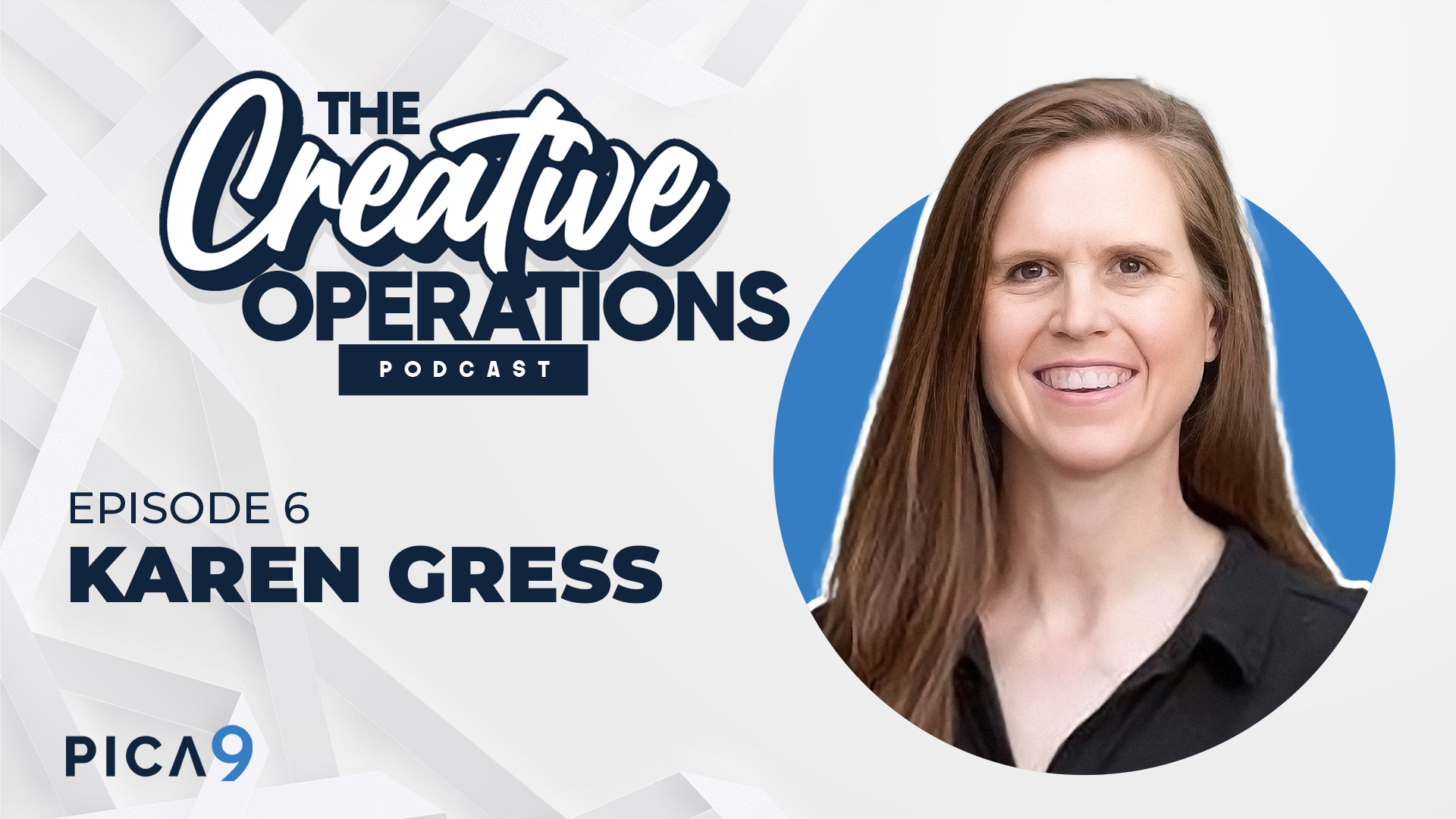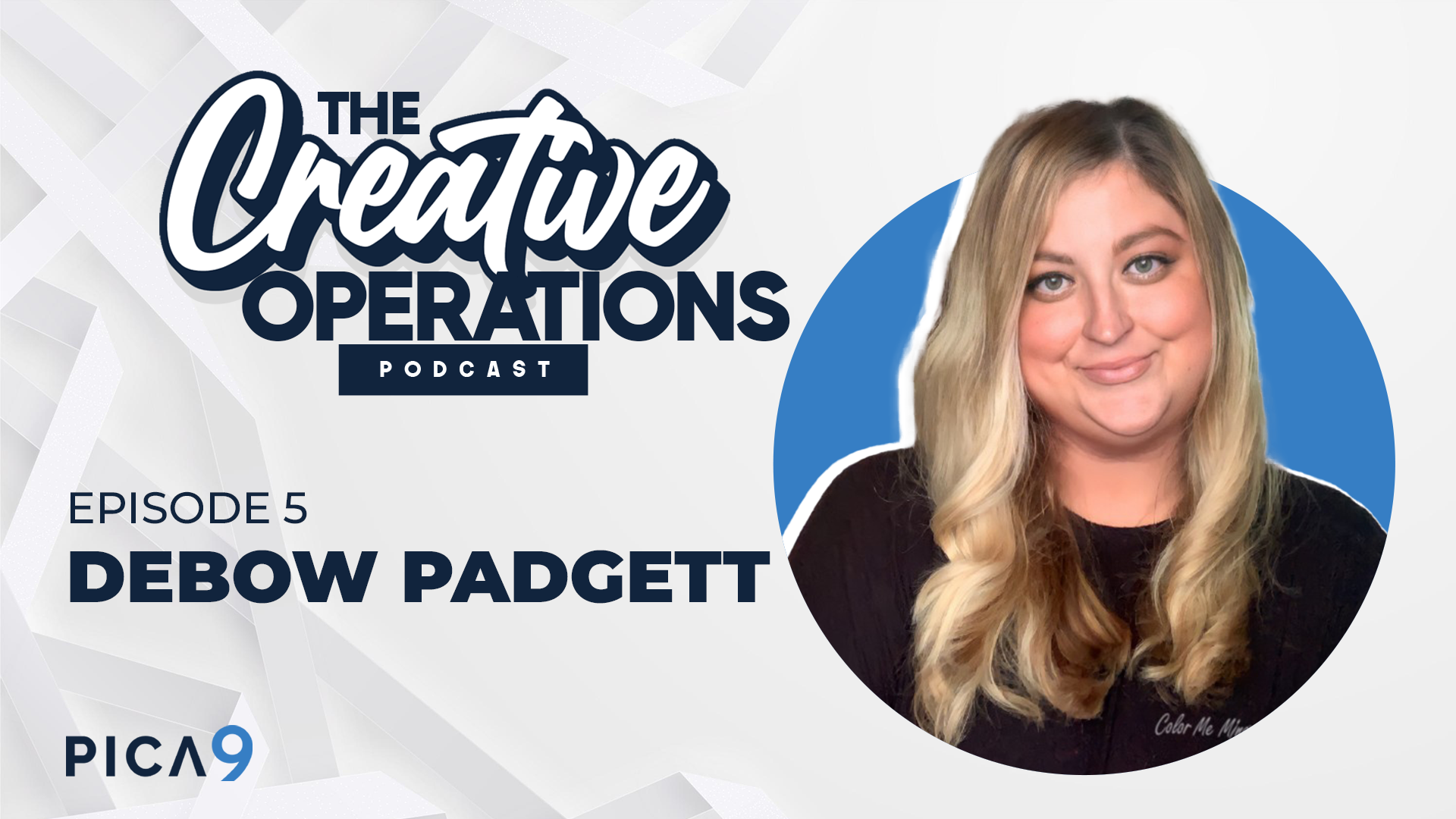Digital Asset Management is in the middle of a renaissance, as more and more companies recognize that DAM lies at the heart of creative operations. This is where Preston Anderson comes in, as he joins Kevin Groome to talk about DAM technology. Preston is the Director for Global Marketing Support and Deployment Services at Marriott International, bringing hard-won knowledge about DAM to the table, so tune in now to the latest episode of The Creative Operations Podcast!
KEVIN: Welcome to this edition of The Creative Operations Podcast. Today we're going to focus on digital asset management and we're really fortunate to have with us Preston Anderson, who's the Director of Global Marketing Services and Support at Marriott international. Preston has great experience in DAM, and I'm sure is filled with insights for us on this particular topic.
So Preston, welcome. And thanks for joining us. The listeners would love to hear a little bit about your history in digital asset management, particularly given the massive kind of digital asset management challenge that you guys have over at Marriott.
PRESTON: I'd say most large corporations have a similar challenge and, you know, I'm probably an accidental, digital asset manager. I definitely didn't jump into this on purpose. When I started with Marriott, we were struggling in a number of different ways, trying to figure out how to drive brand activation across a large group of hotels and a large group of franchisees and managed hotels.
And it was very difficult to work with our properties so that they were producing local marketing activation content that looked like our national work. We went out to try and find a system that would help us with that, you know, a system that would enable our properties to dynamically create the collateral that they needed.
And, we found that system and that really got the process started. The next big challenge was how do we put in front of our users the right assets, right? The right images, the images that they want to use to really showcase their properties and quickly figure it out that that was going to be hard.
There was no central digital asset management system. The processes for hotels to get their images to their desktops; to their hotel websites that our customers are viewing where, was a manual effort. We had assets all over the place and so we really began asking our properties to upload their assets directly to us. And that really got us started in it. And once we started receiving those assets, we needed to figure out what to do with them. You know, how do we categorize them? How do we associate them with the right properties? And so that's the challenge that we undertook. We figured that out successfully.
And then we engaged our digital marketing teams to really automate their process. And so they started using our system to process, the photography and so we had a business workflow that was created and we were off to the races from there. The next step was to create our first kind of custom digital asset management system.
KEVIN: It sounds like when things were coming from all over the place—desktops and art servers and in agencies and on properties and all these different places. You guys had to migrate assets from all these places and try to bring them to some sort of a single place of record, where they could be managed and stored and monitored for usage. Along the way, can you tell us what you discovered about asset migrations? You know, moving thousands or hundreds or tens of thousands of assets at a time, anything you learned along the way? Because I think a lot of folks in the creative operations space find that data migration, asset migration, is really hard. That's the first lesson that we learned.
PRESTON: There's so much that you need to pay attention to and obviously I'm answering these questions from the perspective of someone on the business side. I'm not a technical person, I'm not a developer. I know more about those things than I thought I ever would, but I'd say a really big challenge is really making sure you understand the data, you know, when you're trying to migrate assets from one system to another, those assets are coming with their own specific set of data points.
And so the first thing that we realized we needed to do was map those data points from one system to another, to make sure that the data first, the data was flowing, where it needed to be.
You had other challenges, you know, when system, when an asset from one system could have more data points than the system it's going to could handle. And so you need to create new data points in the target system in some cases. So that's another challenge that we had. You really need to set clear rules.
And so, you need to look at the system hierarchies and say, which one of these are going to win? Right. You have to look at the importance right now, the hierarchy and make those calls. You need to make sure, you know, what each data point means. Some of these data points were created years ago, and maybe before the folks managing the systems where were around and you're not sure what the data points mean.
So, those are all challenges. Having the data map correctly, having the files come over correctly. That's the other big challenge I would say is there's not an easy way to check that the files are actually coming over, all of the files are coming over and you need to check that you need to check that they're not coming over in a way that's corrupting the assets.
KEVIN: And when you're talking about millions of assets it's really hard to get that right. That was a great summary of two of the key points. And, I want to just go back to metadata and the complexity that you guys found as you saw different sources of metadata, maybe path names, for some files that were just sitting on an art server, but a data structure or metadata sets that came from assets that were sitting in a DAM, or maybe even in a cloud-based DAM, but still all different.
Everybody's been talking in digital asset management about how artificial intelligence will address this problem and make the asset tagging and the asset mapping problem kind of go away, disappear. What's your thought on that? Do you think that's the case partially, entirely?
PRESTON: Not yet. I don't think we're we're there yet.
You know, I've seen AI at work, you know, we've gone through RFPs, looking at different DAM system and that's always the first one that they want to show because it looks cool. And the AI tagging has gotten better over the years. I know that they're easier to plug into as well. If you're going in an AWS hosting environment or other hosting environment, there are different services that you can plug into.
The challenge I continue to see with that is that it was hard for AI to really capture that human thought process and how humans search for assets. And I still see a lot of what I would describe as junk tags being associated to assets with an AI tagging structure and I think there's a tendency to over tag assets. And when you do that, that can really lead to poor searches. And so I think that that's, overall, that's why I still shy away from it because search is so important. What we want to do is help people do their jobs. And as soon as you start making it hard, they start to back off from your system.
KEVIN: They start to not trust the system and that could lead to other negative consequences. So that was a great segue to my next question, but, I want to pause and just underline this notion that a tendency to over tag for all you folks out there, a tendency to over tag is a really interesting point.
We often think that our problem in DAM is not having enough information, but in fact it could having too much—especially if it's not truly relevant to the business need. That can be as big a problem, if not sometimes larger, especially if you're showing lots of irrelevant assets that reduce trust in the system.
So speaking of trust, which is like a human factor, I wanted to turn to the human factor around DAM. Just for the sake of everybody out there to know, Preston and his team serve a community that numbers in the thousands, if not tens of thousands of users across the entire globe, 130 countries plus. So Preston, when you think about the human factor and how people build trust over time in their systems and begin to use them in the way you guys want... any thoughts about that you could offer to folks who are just beginning to set out on this journey that you've been on for years?
PRESTON: I think it needs to be clear what the DAM is there to do. For different companies it's different. We've taken the approach of a DIY approach, do it yourself. So, we built systems, really based on the lowest common denominator. So we look at the user that will have perhaps the least amount of tech savvy—the least amount of resources to help them. And you need to make it really clear what those people are there to do and set those expectations. Beyond that, it's really training and support that are so critical, you know, having the right training, the right job aids, so that people can effectively do what they need to do. That's important and that grows trust.
So when your training documentation matches up with what they're actually seeing on the screen that leads to trust in the system. When they're having issues using the system, You need to have support resources that are readily available to jump in and help people out and sometimes actually get them home, right? Do the work for them at times when it becomes really challenging.
I would say engagement is another key piece there. You need to be in touch with these folks, as much as makes sense. You don't want to be overbearing, but with these systems, many times, your users are in the system infrequently—especially with our model, where it's do it yourself. We have a lot of our general managers who are not necessarily tech-savvy. So the more you can engage with them and again, grow that trust to the system all the better.
And then we always have new users coming in as well. There's always a community of new users coming in and you need to make sure that the support that you provide is good and effective across all of those different groups.
KEVIN: Awesome. The point about training and support and also readiness of support we've often seen, you know, especially with IT teams that have been tasked with supporting hundreds, sometimes thousands of applications, as I know, might be the case. It's hard to find somebody in support who knows the unique aspects of DAM, so that they can really answer the questions for users that they have at that point in time. And I would think that it goes to the systems that are connected to the DAM as well. Those are all real purpose-built things that your IT team may not know.
So from a training and support perspective, leveraging your marketing folks, not just your IT team and leveraging your vendors, sounds like a great way to build that readily available support.
PRESTON: Exactly.
KEVIN: So, let's just talk for a second then about another big thing that we've seen across the board, which is a DAM, it used to be that it was sort of a standalone system, but now it's really becoming the source for lots and lots of other systems that want to use that single source of truth, so those clients who've gotten to the point where they're those companies that have gotten to the point where they've got a single source of truth. Now they need to connect it. As you guys have been doing a lot. Integrations is easy to say. Tell me a little bit about, and tell everybody out there a little bit about what it's like to actually do.
PRESTON: Well, integrations are interesting and I'd say each is unique, because more than, more than likely you're dealing with different Vendors, different parties, that want to integrate with your system. And, those folks bring unique capabilities and unique experience in doing that and so I've seen integrations go very smoothly and get done within a couple of weeks. I've seen them take several months to get done. So I'd say it really depends on who you're working with.
Some of the issues that I've seen with it, similar to the migrations, right. Data flow, can be a challenge. The actual files coming through can be a challenge for those integrations, at times. But I'd say it's always gotten, worked out and it's really critical to have those integrations, for a couple, you know, the chief reason is really around reuse.
You want to make sure that your best assets are being used as many places as possible because they are indeed your best assets. And then you want to also make sure that you're making the best on the investment in photography. So you really want that return on investment that you're making in going out and capturing those images or purchasing stock photography, as well. So to the extent that, you know, all of the, consuming applications can leverage that single source of truth, you're really helping yourself, helping the organization, um, and your stakeholders, by making sure that those connections are available for you.
So, you know, like I said, the integration is being an easy to say, but taking the time to think it through carefully, not just a plug and play, but treat it like a project. And if you treat it like a project, you're going to see some of your maximum benefit coming from doing that once you've got your DAM in place, so they can be easy, but often I'm sure you've heard vendor pitches where it sounds like it's a single click, right? So that's a great point to keep in mind.
KEVIN: Okay. Last question. The future of DAM the future of all the things that are connected to DAM. What are you guys seeing? What are you most hopeful about and where, where are your biggest question marks about the future for this kind of class of technology?
PRESTON: Well, that's an interesting question. I think for us, we have a lot of work that we still need to do. We've got a couple DAMs that we're using. We're still trying to figure out how those DAMs should work together.
We have a legacy asset management system that was purpose-built for a field user community. And we have another system that is an out-of-the-box SAAS model from a very large provider, that wasn't built right for a user community. It was built to be managed by admins and so we want it to do both and so we're struggling through that process right now. So we need to figure out how either how to make our DAM work together or get a single DAM to really do a great job across all.
The other things that we're looking to do is really provide opportunities for our business stakeholders to make greater use of the DAM. So, a couple of challenges there. We need to educate. We need to make sure that our stakeholders are aware of all the capabilities of the DAM, because we still have people out using box accounts in different accounts that aren't plugged in.
And to the extent you have that, you don't have a single source of truth. We have capabilities in the DAM systems that are very strong capabilities. The lightboxing capabilities, we call workspace, being able to create private groups and collections of assets, being able to distribute those assets effectively to systems that are already connected and also to business partners that aren't connected to us. We need to make sure that travel agents have access to our photography, other travel management companies, who want access to photography. So, that's a big part of. But, I'll go back to really looking at our brand marketing, our content marketing teams and having the DAM set up, so it helps them solve business problems. That's really where I want to focus. Apart from technology and new features and functionality, that's not where my focus is right now. It's, let's leverage what we have today to drive the business forward, because that's still a big opportunity for us and a lot of white space associated.
KEVIN: It's amazing. After the journey you've been on, to see the road that still lies ahead. There's two aspects to that. One is that it tells you the size and the length of the journey that you're on, but it also seems to me like you've developed a vocabulary and you've developed a roadmap that now shows you much more clearly how to get to the objective you're aiming for even as the user community grows and the use of, or the size of the library grows. Even as those things both expand at the same time, you have a clear path ahead. So, for all those folks who are out there struggling with these things. Have faith.
You get there, you don't get there overnight. You get there in time. But I would say it sounds like the journey's well worth the effort. The juice is worth the squeeze.
PRESTON: Yeah, exactly. That's it. I heard that term not long ago. It's a great space. It's full of challenges. But you get those wins, you know, it's kind of like hitting that sweet shot on the golf course. It keeps you coming back.
Click here to listen to The Creative Operations Podcast and subscribe to stay up-to-date on future episodes.





